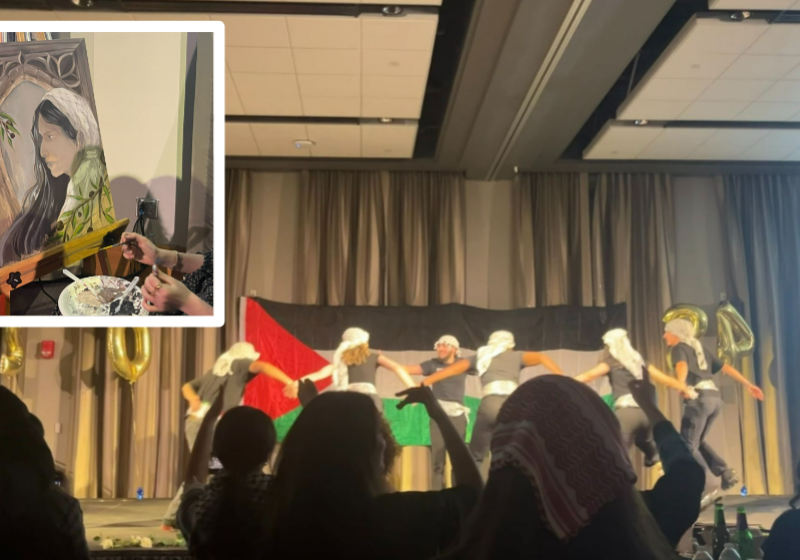Although the name actually means imitating warriors or military practice, martial arts is more than fighting or sparring – combining discipline, spiritual energies and perhaps most importantly, physical toning and strengthening.
There are various forms of the self-defense arts, usually without weapons, and all originate from ancient China, India and Tibet. Modern practice can be for self-protection, well-being, competitive sport or good old-fashioned exercise. Here at UR, martial arts are alive and well, and the following, although not comprehensive in the least, might help you sort out the different kinds that are available, and maybe even spark your interest to join in.
Tae Kwon Do
Originally based on Shotokan karate, this Korean martial arts form literally means “the way of the hand and foot,” and for many years closely resembled the Japanese form.
It was not until after World War II that it was adopted more in the Korean style, including increased kicks and punches, and branching off today into its own techniques and focus.
“Tae Kwon Do as it is practiced today emphasizes speed, power, accuracy, focus and balance,” Tamer Abdelgawad, an alumnus member of UR’s Tae Kwon Do club and part-time instructor, said.
“Some styles of Tae Kwon Do are tailored to Olympic competition, while other, more traditional styles, are tailored to self-defense and personal growth,” he said.
UR’s group, one of the oldest martial arts organizations on campus – started in 1971 – practices a form called Chung Do Kwan, which according to Abdelgawad is a traditional Tae Kwon Do style combining basic attacks and defenses, forms called katas, and free sparring.
“We do train hard – sometimes – but the club atmosphere is noncompetitive and friendly,” Abdelgawad said.
Shotokan Karate
The most traditional of the martial arts, Shotokan karate is a derivative of the ancient Chinese form of karate. Introduced to Japan in the late 1800s from Okinawa, Shotokan was then popularized and brought to America beginning in the mid-1950s. Shotokan in Japan is often referred to as simply “karate,” Shotokan being the name of the building in Tokyo where its founder, Gichin Funakoshi, taught.
It emphasizes the three main focuses of kihon, katas and kumite – which translate to basics, forms and sparring, respectively – and is similar to the other martial arts, but has some important differences.
“The difference between Shotokan and Tae Kwon Do is the difference between going to Yale or Harvard,” graduate student Leslie Baksmaty, a 9-year member of UR’s Shotokan club, said. “They have slightly different changes but they are not fundamental. The martial arts try to get you to build weapons with your limbs. Many of these schools differ on how best to teach someone to fight.”
UR’s Shotokan club in particular is a long-running and dedicated group. “The small dojo here has been practicing for many years, about two decades running – we always practice Thanksgiving, Christmas break, winter recess, every time we come Shotokan is always running,” he said.
“That is a testament to how well the club is organized,” Baksmaty continued. “That is very important because you do karate for a long time. You need an atmosphere in which you are not intimidated, you are not asked to fight, there is no blood and at the same time it also allows you to push the limits.”
Wado-Ryu Karate
Becoming popular in the 1900s, Wado-Ryu is a Japanese karate form that is “lighter than the Shotokan style” according to the UR club Web site – wado translates to ‘the way of peace and harmony’ – with less emphasis placed on the katas and kumites.
“It is more traditional Japanese style,” President of UR’s Wado-Ryu Karate Club Dan Nathan-Roberts said. “Wado-Ryu is a more relaxed style than a lot of the other karates. Because of that it is usually a much more practical fighting style in tournaments and things like that.”
It extends beyond simply the physical, however.
“I like it because I’ve learned things both physically and mentally that are useful for everyday life,” Nathan-Roberts said.
He emphasized the qualities of the club, and the benefits the practice of karate can bring.
“The campus club has more individualized attention and works with a pretty broad range of skill,” Nathan-Roberts said.
“It’s also what you make of it. It teaches you more than physical skill and finesse. It teaches you how to be a good person.”
UR Kendo
Translated as “the way of the sword,” kendo is the main martial art which uses weapons, whose roots extend back to Japanese samurai warriors.
Also known as Japanese fencing or swordsmanship, kendo combines the use of various types of swords for practice – the bokken, used for basics and practicing katas and the shinai, for practice in full contact sparring, both mimicking the samurai’s use of the ketana. Here at UR, there is not the serious amount of training normally given to a kendo student, but members do practice sword fighting technique and other features of the kendo tradition.
“In a classical kendo training a student would start very young and spend years practicing just one move,” sophomore and UR Kendo founder Josh Symonds said. “As college students we’re already too old to start on that path, so the club has a more fun, accelerated approach, while maintaining careful and rigorous training progress.”
Even with these limitations, the club manages to keep the fundamentals of the kendo experience intact.
“We teach much of the meaning and tradition behind kendo, which is essential to beginning to understand the true way of the sword,” Symonds said.
“It remains an energetic sport though, and one can get a really good workout from kendo.”
Fencing
Although not immediately thought of in the family of martial arts, fencing is a sport, and sword fighting was a standby for military weapons training throughout the ages.
The first fencing for sport is traced to Egypt in 1200 B.C., and sword use was en vogue from the Greeks and Romans through the Middle Ages. Many military officers and upperclass gentlemen carried swords up through the mid-1800s. The swords are still used today, but as decorative symbols rather than functionally in combat.
The sport of fencing flourished, becoming an Olympic sport in 1896, and it has centuries of European tradition keeping it popular.
Different swords used are the foil – the bluntest, the pe – a relative of the dueling sword, and the saber – a descendant of the battle sword used by cavalry.
Fencing is a sport of strategy, quickness and agility, all performed while under the traditional white padding and facemask.
UR’s fencing club, which has approximately 50 active members and is a recognized University Athletic Association member, has regular competitions and is more modern than traditional.
“What we do here is actually less of a martial art and more of a sport,” junior Eric Dudley said. “I think of it as a sport. It’s a competition. It sort of requires you to have everything.”
“It’s a very difficult sport because it’s skill intensive, but if you get good at fencing, you’re a great athlete and you think really well. It trains you to react and make decisions quickly,” he said.
The team isn’t all hard work though. “Really the reason [I joined] was it’s a great group of people,” Dudley said. “We have so much fun as a fencing team.”
UR Self-Defense Association
Described as having more of a kung fu style and teaching practical skills, the UR Self-Defense Association is primarily concerned with teaching members methods of fighting which can be applied in real-life situations and focuses less on tradition and forms.
“It’s really much more real-world oriented, and practical oriented,” senior Morris Collins, who runs the club, said.
“The idea of the club is a group of people with different styles who train together and our phi
losophy is anyone who’s qualified to teach or has anything to share can share so we get a really diverse mixed environment for trading techniques and trading ideas.”
The group combines some kickboxing, kung fu, jiu jitsu, and other forms, depending on members’ interests.
“We don’t train the way most clubs on campus do, which is stick to a style and practice in the traditional way,” Collins said.
“Because we have a lot of people really interested in self-defense and learning how to fight in a realistic manner, we don’t focus so much on the traditional things like forms. We do a lot of hands-on practice.”
Capoeira
A cross between dance and martial arts, Capoeira combines music, dance, rituals, fighting and acrobatics. Of Afro-Brazilian origin, Capoeira is ‘played,’ with members forming a circle with the ‘capoeiristas’ in the center engaging in the dance/acrobatic/fighting combinations with each other while other members play ritual instruments as accompaniment.
“The difference between [Capoeira] and all the other martial arts is the presence of intruments which controls the tempo and movements, and that control makes it more fun,” sophomore Jay Min said. “It’s a different atmosphere altogether.”
Conclusion
There are a variety of options here on campus for people interested in martial arts of all varieties. Students should find one that best fits their personal preference.
Linden can be reached at klinden@campustimes.org.


